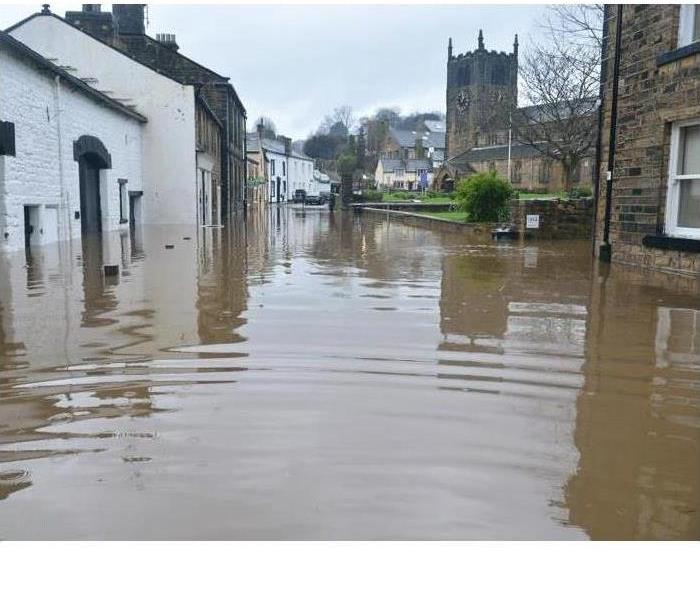Dealing with Water Floods
8/18/2022 (Permalink)
How to Stay Safe During a Flood
Water can enter your home during a storm and cause flooding, which can seriously harm your property. However, ensuring the protection of your immediate family, pets, and other loved ones should always come first. When the weather is safe, return to inspect the damage and start the cleanup once the storm has passed. When visiting the floodplain, avoid doing the following things:
Keep Your Hands Off the Water.
Numerous forms of contaminants, such as bacteria, viruses, chemicals, and debris, can be found in floodwater. Wearing rubber boots, gloves, and avoiding getting your hands or face wet will help protect your skin from the damaging effects of the water. If, in spite of your best efforts, contact happens, wash right away with soap and fresh water.
Never step into standing water.
Homes, yards, roadways, and other locations may have standing water after a flood. It is not unusual to see downed powerlines following a storm because strong winds frequently accompany intense storms. You can't always discern what's underneath the surface because floodwater is typically murky. If you enter a flooded home, you can get an electric shock if the water has been electrically charged. The risk of electrocution will be reduced with the use of rubber boots.
Don't let the water stand still.
Bacteria have more time to grow the longer water sits. The structural integrity of objects might start to deteriorate if they are submerged in water over extended periods of time. As quickly as possible, the water should be carefully evacuated. You can limit any water damage to your home by clearing the water more quickly. As soon as the water has been removed from the area, you should start the drying process because mould can start to form in as little as 24 to 48 hours.
By following a few precautions, you can help keep yourself safe from the dangers of floodwater.





 24/7 Emergency Service
24/7 Emergency Service
